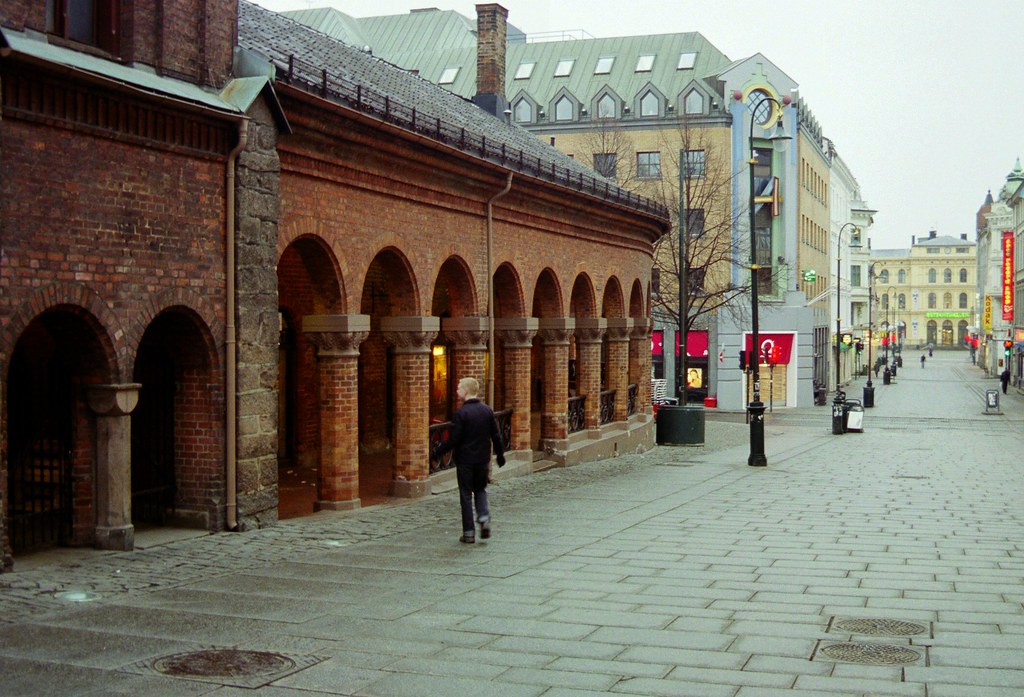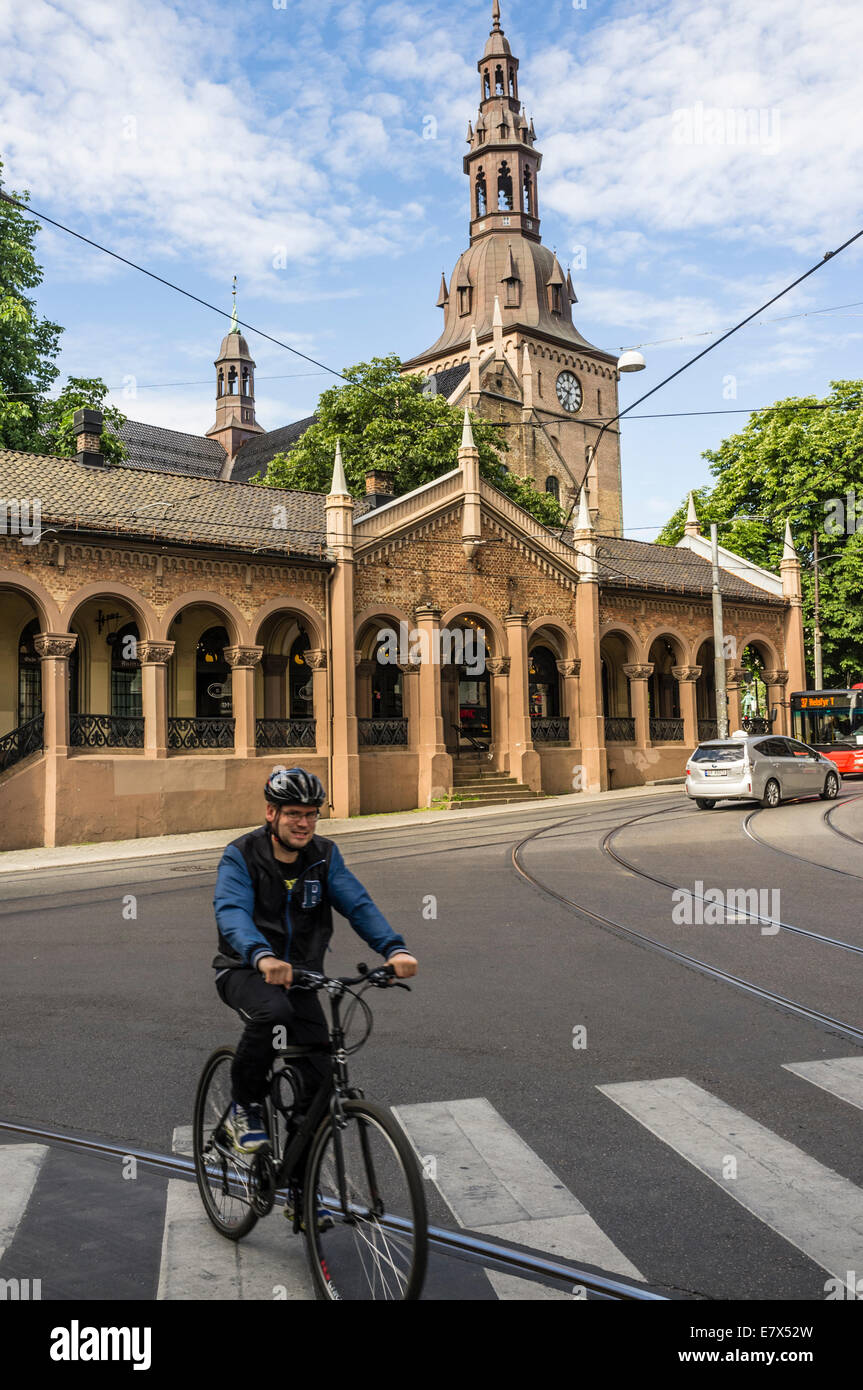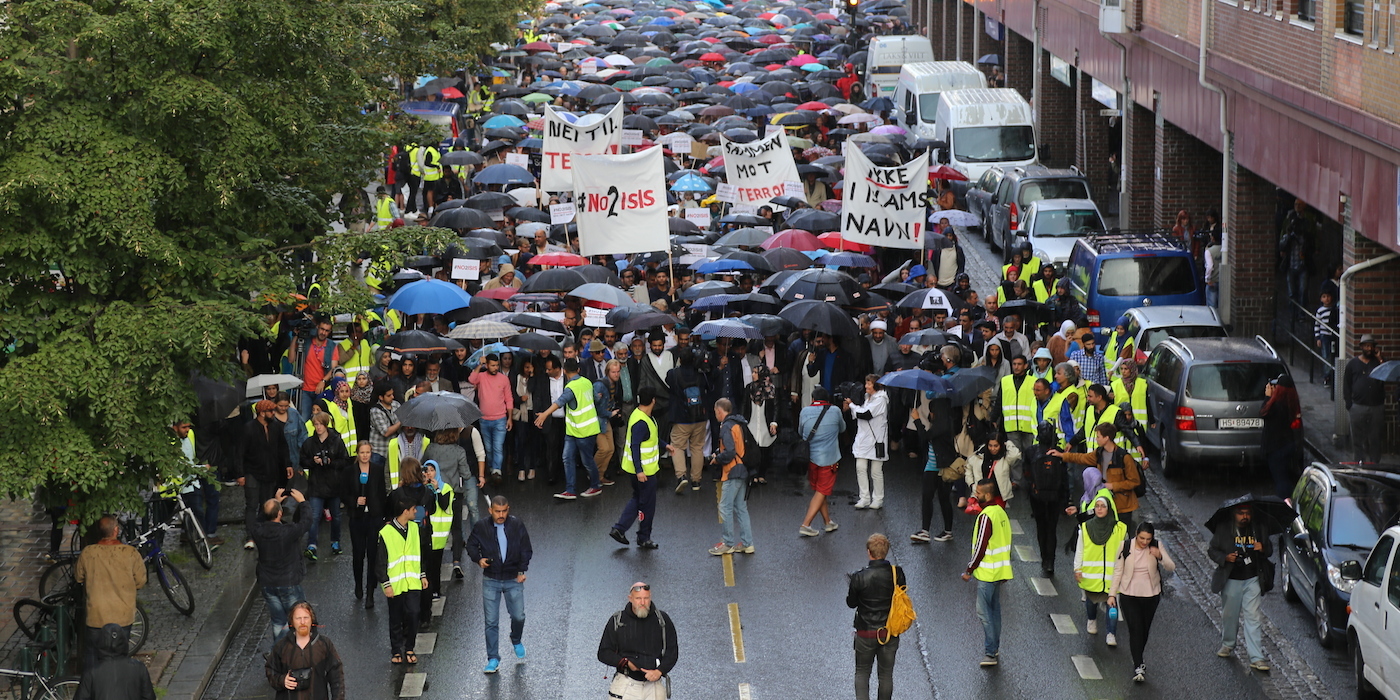Oslo Bazaars
Called Stortorgets bazaar or Basarene is located east of the cathedral in the Norwegian capital Oslo. It was built in the years 1840-1859 by the architect Christian Heinrich Grosch in the Romanesque Revival style.
History
Originally there were at this point only covered butcher stalls. At the beginning of the 19th century, however, better conditions for food were demanded and so the construction of 24 stores along Karl Johans gate and gate Dronningen was decided. Since these were not enough, led to the arcaded building with the same dimensions of the half circle continues. Together thus arose more than 50 stores. Due to a different height levels of the terrain Grosch designed a staircase on the outside front.
Following up on the store front, the fire station was built in the years 1854-1856.
In the 1870s, also this number of stores proved to be too little and there was a renewed cultivation discussed. Instead, the new stores were on the nearby square Nytorget (now Youngstorget ) laid.
In 1898, the stock exchanges and trade committee of the question of a new exchange building adopted in Christiania ( -og Børs trading komiteen i Kristiania ). It should serve as a replacement for the existing building since 1828 Oslo Børs, which had proved to be too small and impractical. Two years earlier, had decided that plans for a new market should be developed, which provided for the demolition of the Stortorgets bazaar and the associated fire station, the municipal council. The new building should serve both municipal and private purposes. The municipality even proposed to the Exchange Committee to build on the plot of the bazaar halls. Then, the architect Herman Major Backer presented in 1901 plans for the new building in the neo-Renaissance style. This triggered one of the first debates to demolish or keep out of the city. Due to the strong opposition by the plans could not be realized.
In 1927, the building complex was declared a national monument, but the City Council discussed an outline for the benefit of a large park. This proposal was in 1931 despite historic preservation also accepted. Riksantikvaren Harry fat, head of the Norwegian conservation authority, engaged intensively against the demolition. With the German occupation of Norway in World War II, the discussion came to an abrupt end.
After the war, the demolition plans in 1949 have been lifted. The system fell into disrepair during the time and was finally restored in 1960. Today, shops and restaurants are in the halls.










